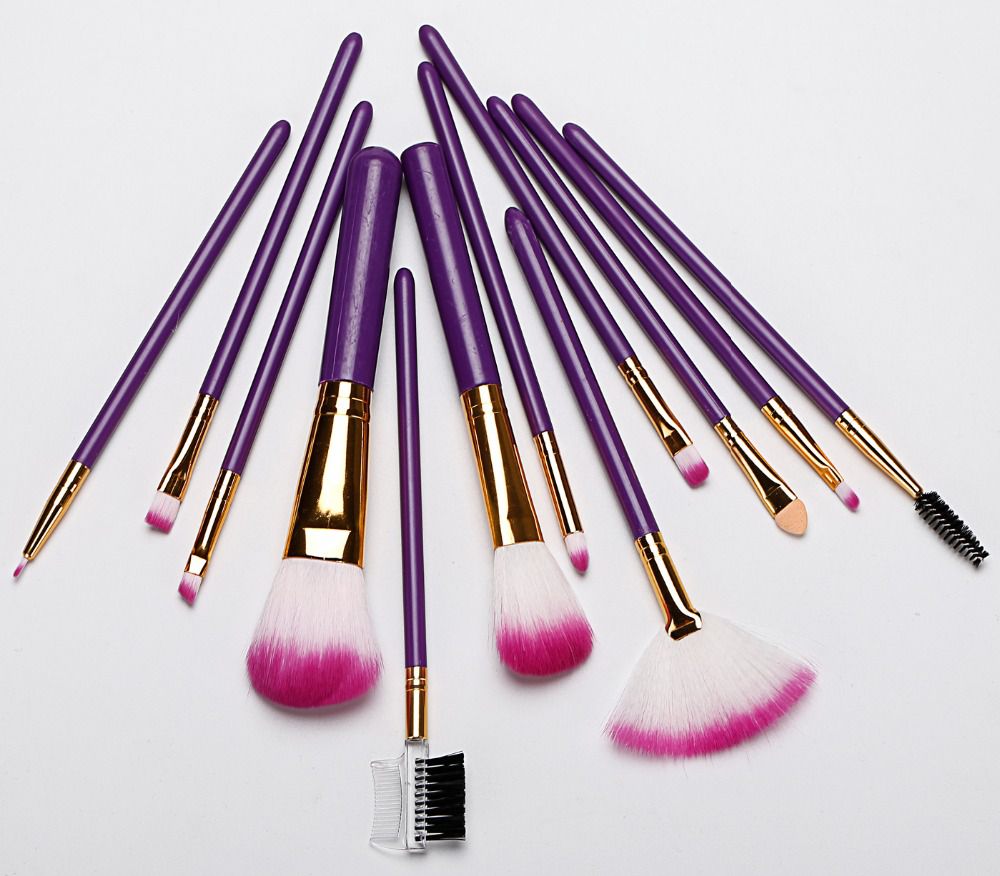Industry news
Bristle Surface Roughness: A Key Factor in Pigment Distribution and Blendability
- 254 Views
- 2025-07-27 01:32:18
Bristle Surface Roughness: A Key Factor in Pigment Distribution and Blendability
In the world of makeup tools, the performance of a makeup brush is often attributed to its bristle material—natural hairs like sable or squirrel versus synthetic fibers such as nylon. Yet, one critical, often overlooked factor lies in the microscopic texture of the bristles themselves: bristle surface roughness. Defined as the microscale irregularities in a bristle’s surface (measured by parameters like Ra, the arithmetic mean deviation of roughness), this texture directly shapes how brushes interact with pigments, ultimately dictating two make-or-break qualities: pigment distribution and blendability.
Understanding Bristle Surface Roughness

Surface roughness refers to the tiny peaks and valleys on a bristle’s surface, quantified by Ra values (lower Ra = smoother surface, higher Ra = rougher surface). In manufacturing, this texture is intentionally engineered through processes like chemical etching, physical磨砂 (abrasion), or coating. For example, synthetic bristles may undergo controlled磨砂 to mimic the natural scales of animal hairs, while others receive smooth coatings to reduce friction. These adjustments, often subtle, have outsized impacts on brush performance.
How Roughness Drives Pigment Distribution
Pigment distribution—how well a brush picks up, holds, and releases color—hinges on roughness. A rough bristle surface (Ra 1.2–1.8μm) features more micro-indentations, which act like tiny “pockets” to mechanically trap pigment ps. This increases “grip,” allowing the brush to pick up 30% more powder pigment than a smooth bristle (Ra<0.8μm) in lab tests. However, grip alone isn’t enough: controlled roughness ensures gradual, even release. Brushes with excessively high Ra (>2.0μm) may clump pigment, causing patchy application, while overly smooth bristles release pigment too quickly, leading to sheer, uneven coverage. The sweet spot? Moderate roughness balances grip and release, ensuring pigments transfer uniformly from brush to skin.
Roughness and the Art of Blendability
Blendability—the brush’s ability to soften color edges and merge shades—relies on how smoothly bristles glide while maintaining contact with the skin. A slightly rough surface (Ra 1.0–1.5μm) creates just enough friction to “grab” skin texture, preventing the brush from “slipping” over color boundaries. This allows for seamless transitions between, say, a warm bronzer and cool highlighter. In contrast, ultra-smooth bristles (Ra<0.5μm) slide too easily, failing to blend edges, while overly rough ones (Ra >2.0μm) drag, causing streaks. Tests show brushes with optimized Ra values achieve 25% larger blend areas with softer color gradients compared to unadjusted bristles.
Applications Across Bristle Types
Natural vs. synthetic bristles often differ in inherent roughness: animal hairs have natural scales (e.g., squirrel hair’s fine scales = moderate Ra ~1.3μm), ideal for blending. Synthetic bristles, once criticized for poor performance, now use roughness engineering to rival naturals. For instance, nylon-66 bristles with etched surfaces (Ra 1.2μm) match the pigment grip of sable hair while offering cruelty-free durability. Meanwhile, smooth synthetic bristles (Ra 0.8μm) excel for lightweight liquids, as their low friction prevents product absorption.
The Manufacturing Imperative
For brands, prioritizing surface roughness isn’t just about quality—it’s about customization. A blush brush demands moderate roughness (Ra 1.4μm) for buildable color, while a precision eyeshadow brush needs higher Ra (1.6μm) for intense pigment payoff. By tailoring Ra values to specific makeup needs, manufacturers can create brushes that cater to pro artists and everyday users alike.
In the end, bristle surface roughness is the unsung hero of makeup brush performance. It bridges material science and artistry, turning ordinary fibers into tools that elevate pigment distribution and blendability. As the industry evolves, mastering this microscale texture will remain key to crafting brushes that don’t just apply color—but perfect it.











